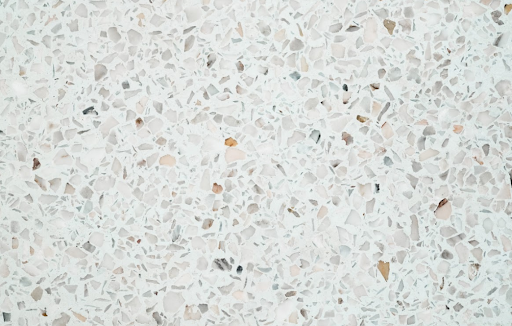How Terrazzo Floors are Installed

If you’re a business owner looking to purchase and install a new floor, you want to get your money’s worth. That usually means investing in a product that will be durable, require little maintenance, and one that allows customization. In other words, terrazzo floors are the perfect solution for you. Below, we take a look at what terrazzo floors are and how it’s installed. Also, here’s why it’s the perfect flooring solution for the commercial food and beverage industry.
What is Terrazzo?
Terrazzo is a type of flooring material made up of different colored chips. They usually blend together with a cementitious binder. These chips can be different materials, including glass, marble, granite, and quartz. They can even include shell fragments, mother of pearl, and pebbles.
The chip substance isn’t the only thing that has a large selection. These items can come in a variety of different colors including white, blue, black, clear, beige, and even red. This color variety makes terrazzo perfect for commercial restaurants that want a floor to match their restaurant’s interior.
How’s It Installed?
Traditionally, terrazzo chips were added to a cement mixture, either precast concrete or poured-in-place concrete. Precast concrete was made and cured off-site, then brought to a location for installation. Pour-in-place concrete was created on-site. However, in recent years, polymer-based terrazzos have become the industry standard since they are much more efficient to install.
Furthermore, it’s worth noting that terrazzo can either be poured directly over a concrete slab or placed in individual tiles. The first step in the installation process is to prepare the floor. Like concrete, terrazzo floors need a clean, debris-free surface in order to be successful. First, your contractor will inspect your floor and check for any cracks or areas that need repair. Once repairs are complete, they will pour the terrazzo into the determined design layout.
Terrazzo material uses dividers that help separate the colors. These dividers can create an intricate design to elevate the look and feel of your interior. Once you have designed and approved the layout, your contractor will then combine a bunch of chip aggregates (like the ones mentioned above) with either a cementitious binder or an epoxy binder; a cementitious binder helps keep everything together and commonly includes cement, water, and mortar.
After this, the contractor will carefully pour the terrazzo mixture onto the surface. If you decide to incorporate multiple colors, the contractor will create new batches. These will ensure you include all your design elements before completion of the installation process. The terrazzo will then have to cure, which takes about 24 hours. Once the floor fully cures, the contractor will then grind the floor. After that, it becomes smooth and safe to walk on.
After the floor is smooth, it’s time to apply a sealant. This will prevent cracks and other damage from routine wear and tear and foot traffic. This sealant will also make your floor shiny.
How Long Does It Take to Install?
On average, the installation process for terrazzo floors can take about 10 days depending on the circumstances. These circumstances include how intricate the pattern you want is or if your floors need repairs. This time will vary, though, so it’s best to speak with a professional commercial flooring company to determine the length of time your particular order will take.
Benefits of Terrazzo Flooring
One of the biggest benefits of terrazzo flooring is that it can cure in as little as 24 hours. Then you can grind and seal it the very next day. This is a huge benefit for those in the commercial food and beverage industry who don’t want their location closed longer than necessary.
Another benefit of terrazzo flooring is that it is extremely durable. In fact, it can last for 75 years if properly maintained. It’s also slip-resistant, non-porous, and resistant to mold and other types of bacteria. This type of flooring is perfect for the food and beverage industry. It works well in both indoor and outdoor spaces. It’s versatile enough to use for your entire company, including off-site factories, storage facilities, and in-person restaurants.
Terrazzo floors are a great, low-maintenance option for business owners looking to update their flooring. Between the customization and durability they offer to high-traffic areas, more food and beverage industries are installing terrazzo floors for their business.

